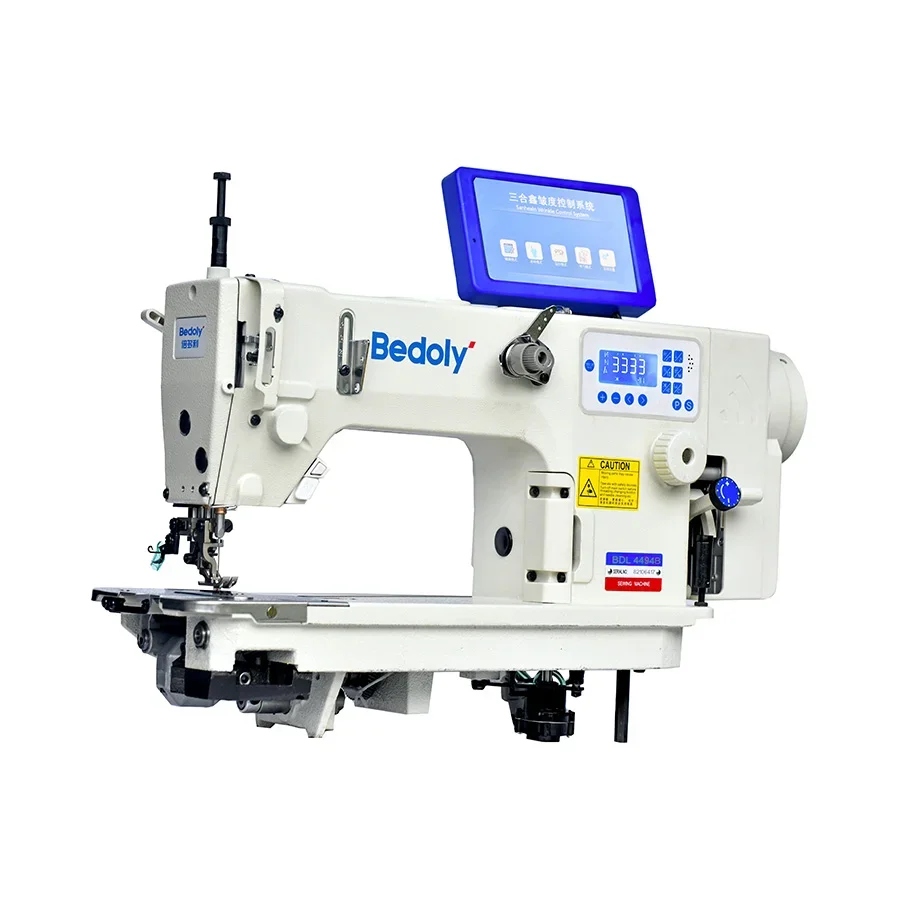Chain stitch sewing machines are a versatile tool used in various industries and applications. In this article, we will delve into the working mechanism of chain stitch sewing machines, the different types available, their applications, advantages, and the necessary maintenance and care required to keep them in optimal condition.
How Does a Chain Stitch Sewing Machine Work?
Chain stitch sewing machines utilize a single thread to create interlocking loops, forming a chain-like pattern. The needle passes through the fabric, creating a loop, and the looper mechanism catches the loop, forming a chain stitch. This continuous chain of stitches provides flexibility and strength, making it suitable for various sewing tasks.

Types of Chain Stitch Sewing Machines
Manual Chain Stitch Sewing Machines:
These machines require manual operation, making them suitable for small-scale projects or hobbyists. They are often portable and easy to use, making them a popular choice for beginners.
Industrial Chain Stitch Sewing Machines:
Designed for heavy-duty applications, industrial chain stitch sewing machines are built to handle high volumes of work. They are commonly used in the garment industry for tasks such as hemming, seaming, and attaching labels.
Applications of Chain Stitch Sewing Machines
Apparel Industry:
Chain stitch sewing machines are widely used in the apparel industry for various applications, including sewing seams, attaching pockets, and creating decorative stitches. The flexibility of the chain stitch allows for easy manipulation of fabric, making it ideal for garments with stretch or intricate designs.
Bag and Shoe Manufacturing:
The strength and durability of the chain stitch make it suitable for stitching bags, shoes, and other leather goods. It can handle thick materials and provide a secure stitch that withstands heavy use.
Upholstery and Home Decor:
Chain stitch sewing machines are also used in upholstery and home decor applications. They can efficiently sew curtains, cushions, and other fabric items, providing a neat and professional finish.

Advantages of Chain Stitch Sewing Machines
Flexibility:
The chain stitch allows for easy manipulation of fabric, making it suitable for sewing curved or intricate designs. It is also ideal for stretch fabrics, as it provides elasticity and prevents seam breakage.
Strength and Durability:
The interlocking loops of the chain stitch create a strong and durable seam. This makes it suitable for applications that require high tensile strength, such as sewing heavy fabrics or attaching handles to bags.
Speed and Efficiency:
Chain stitch sewing machines are known for their high-speed stitching capabilities. This makes them ideal for industrial settings where productivity and efficiency are crucial.
Maintenance and Care for Chain Stitch Sewing Machines
Regular Cleaning:
To ensure optimal performance, it is important to clean the machine regularly. Remove any lint or debris from the feed dogs, needle plate, and bobbin area. Lubricate the moving parts as recommended by the manufacturer.
Thread Tension Adjustment:
Check and adjust the thread tension regularly to ensure proper stitch formation. Improper tension can lead to loose or tight stitches, affecting the overall quality of the sewing.
Needle and Bobbin Replacement:
Replace the needle regularly to prevent skipped stitches or fabric damage. Additionally, ensure that the bobbin is correctly wound and inserted to avoid thread jams or uneven stitching.

Conclusion
Chain stitch sewing machines offer versatility, strength, and speed, making them a valuable tool in various industries. Understanding their working mechanism, different types, applications, advantages, and maintenance requirements will help users make the most of these machines. Whether in the apparel industry, bag manufacturing, or home decor, chain stitch sewing machines continue to play a vital role in the world of sewing.
Exploring the Versatility of Cylinder-Type Computer Sewing Machines